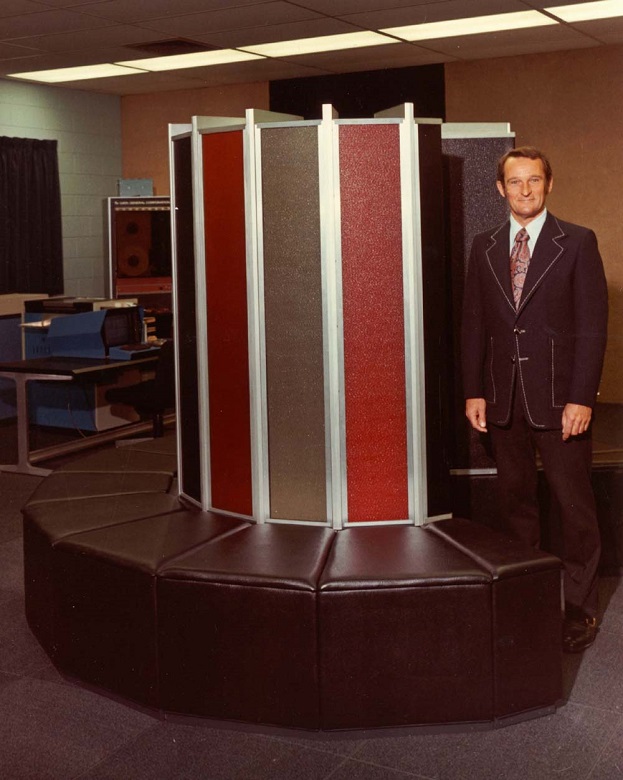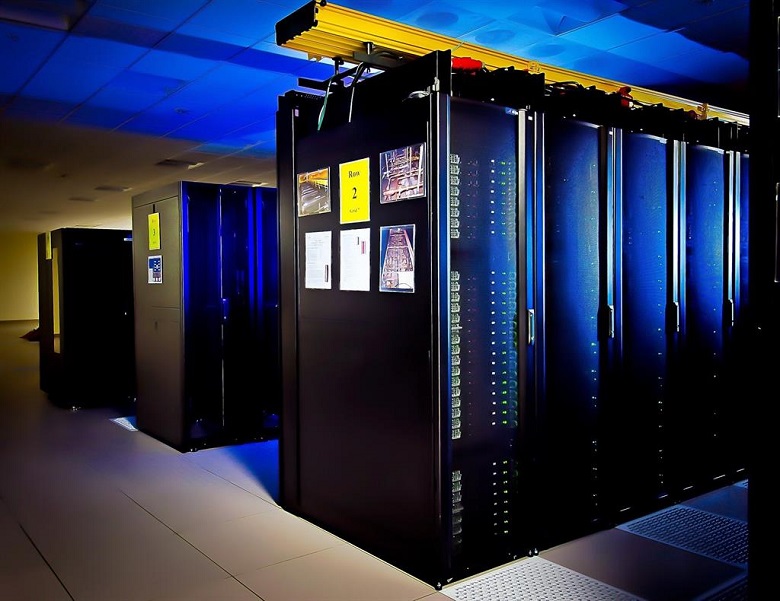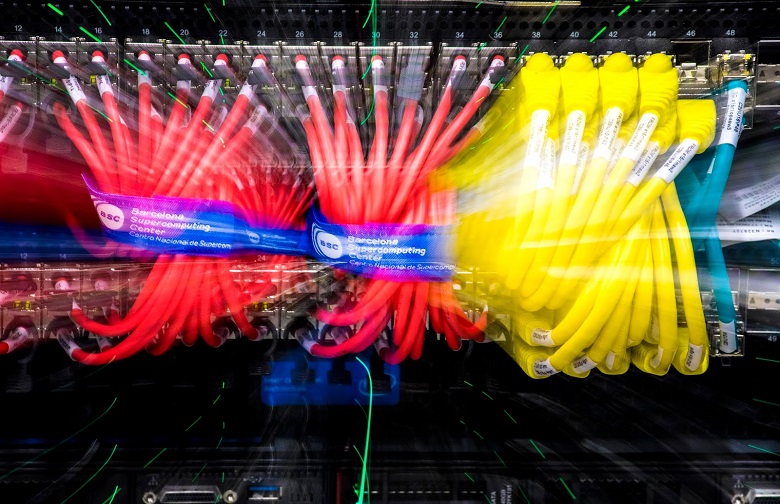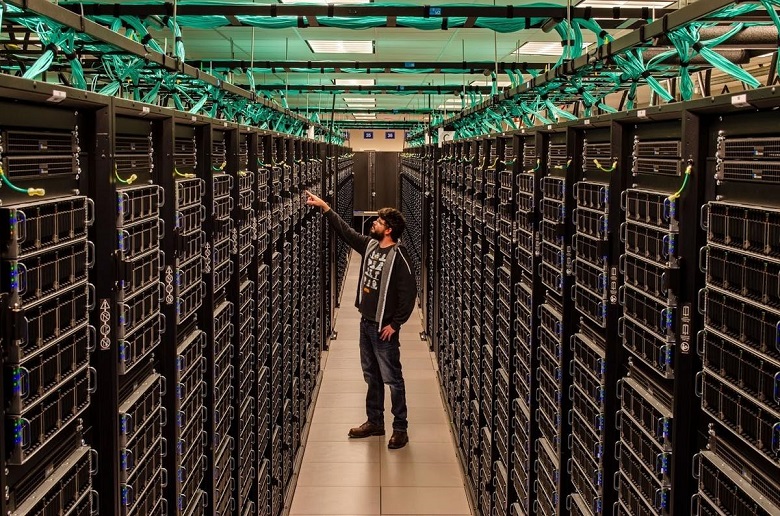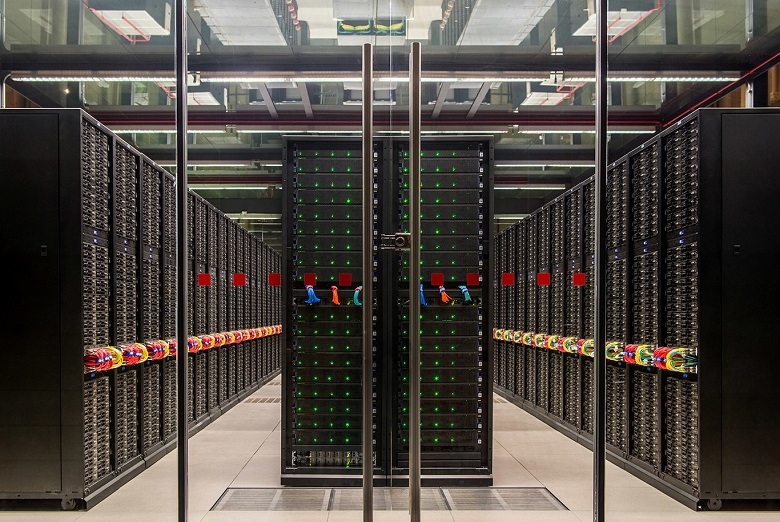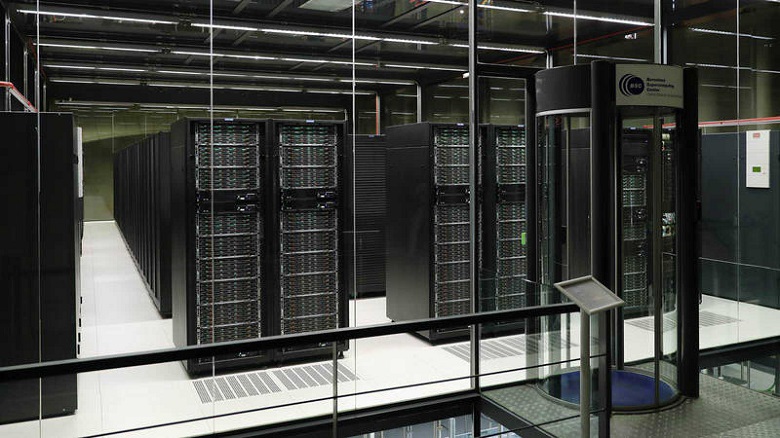In this interesting article you will learn a topic of great interest: the supercomputer. You will know his history and especially which is the most powerful and his contribution to the progress of humanity. Get excited to read!
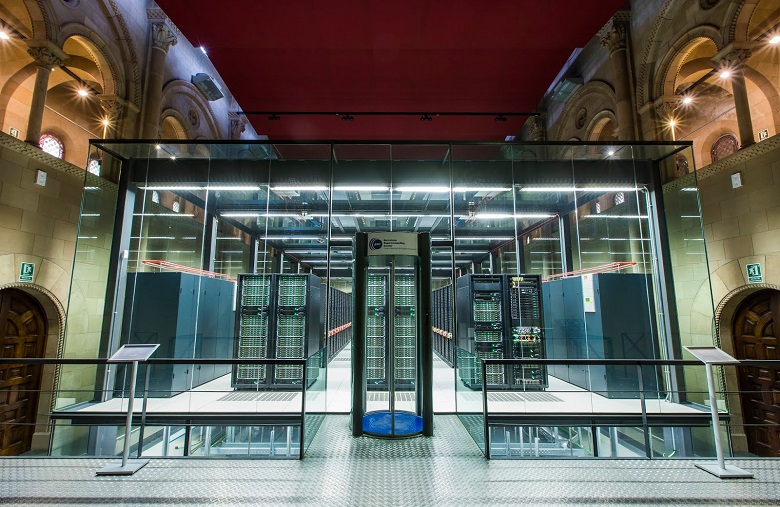
supercomputer
The adaptability of civilization to the great changes offered by technology, especially that related to information, has transformed the perspective of conceiving the world as a place that is getting smaller every day, which perceives changes in a real and perceptible way for the senses. .
The invention of increasingly efficient and powerful computers are in the public domain of the common citizen. We will begin by offering a definition of this fantastic invention of man.
Establishing a definition of Supercomputer is not an easy task. However, in order to use a simple and rational concept, it can be said: A Supercomputer is a device that can be considered, in its introduction, as the maximum of its procedural and calculation capacity, with much higher capacities if we compare it with a computer. common use computer.
A Supercomputer can also be understood as a very powerful and fast type of computer, designed to process large amounts of information in a very short time and exclusively in the treatment of a specific task.
In this sense, some programmers consider that a correct definition would be to consider a Supercomputer as a more powerful and faster computer that exists at a given moment. They are large in size, can process huge amounts of information in an instant, target a specific area, and have a huge storage capacity. Let's talk about the background of this device.
History
In the year 1960, the Control Data Corporation (CDC) company, Mr. Seymour Cray, introduced the first Supercomputer, which led in an effective methodology, composed of computer techniques, such as storage, processing and representation of large volumes of data. in a very short time frame. Here is a brief biography of the creator of the first Supercomputer.
Seymour Gray was born in Chippewa Falls. Wisconsin United States, on September 28, 1925 and died on October 6, 1996 in a tragic car accident in Colorado, United States. He studied Electronic Engineering in Minnesota. Seymour Gray is considered the father of Supercomputers; his greatest obsession was the creation and development of this device.
In 1957, the Control Data Corporation (CDC) company built the CDC 1604 supercomputer, which was the first computer to use transistors instead of vacuum tubes, an innovation for the time.
Over time and due to the success achieved by the performance of Supercomputers, Seymour Craig was motivated to become independent and create his own company in 1970, called Cray's Research. The object or corporate name of this company was to dedicate itself exclusively to the design and construction of supercomputers and prior order by the client.
The CRAY-1 (1976), was a model that was installed at the Los Alamos National Laboratory, it incorporated a vector processor together with a scalar processor, considered at the time the fastest in the world, which had a capacity of 1 Million of 64-bit words and a cycle time of 12,5 nanoseconds. Its value was listed at 10 million dollars.
This corporation was the leader for five years in a row in the supercomputer market, providing new designs adaptable to user demands.
This device called CRAY-2 (1985), had a speed of about 6 to 12 times higher than its predecessor, had about 250 million words and 240.000 chips, as an important feature. Inside it was submerged by a cooling liquid. In mid-1986, there were about 130 systems of this type around the world, of which 90 were built by the Cray brand.
At this time, the Supercomputer market is dominated by very solid companies such as Industries Bussines Machines (IBM) and Hewlett Packard (HP), which have acted as absorbing companies for other smaller corporations, whose main purpose has been to gain experience in such a dynamic computer industry.
Characteristics of the supercomputer
One of the most relevant characteristics of the supercomputer consists of the number of processors and its large memory, which allows a wide range of effective storage of the operating system and files. Its calculation capacity is much higher when compared to common computers.
The most important criterion of performance is conceived in the calculation capacity that is measured in FLOPS (Floating Points Operation per Second), which is understood as an arithmetic operation equivalent to one flop per second. (It is important to emphasize that the final s does not refer to the plural but to the second s). The Peta FLOPS, is a unit equivalent to 1000 Billions of operations per second; it is illustrative to point out that IBM Summit reaches a power of 200 PetaFLOPS.
In this way, the supercomputer allows multiple users to connect at the same time and from remote stations to the data center, however, it has a disadvantage with respect to the quality of the users, since these are specialists in specific investigations or queries.
Customers select this type of technology, that is, from the point of view of the problems to be solved, they choose the equipment through catalogs promoted by the companies that distribute these technologies.
Another characteristic is related to the scope, since its penetration is very low or practically none in common society, however, the great impact that this technology has on research centers, universities, financial centers is undeniable. NGOs and government offices for the use and treatment of large databases or operations with huge volumes of calculations.
In this way, the supercomputer has become an indispensable tool in scientific research and industry in various sectors of contemporary society.
Operating systems on the supercomputer
Supercomputers are complicated machines, designed for specific purposes and require a complex operating system, customized and optimized for that purpose.
On the other hand, it should be noted that the first supercomputers did not have a built-in operating system, this condition forced data centers or any other public or private institution that required its use, to assume the commitment of developing an operating system (SO ) specifically functional equipment; By way of illustration, the CDC 6600 (considered the first supercomputer in history) used an OS, known as Chippewa or Gray's operating system, characterized by being very simple but with a high vocation to be able to control the different tasks of the computer system, resulting that the different activities always had what they required to carry out their purpose.
Kronos operating system
It was designed and implemented during the 70's and its main characteristic is that the volume of tasks could be accessed at the same time, an important condition to significantly optimize the development of the defined work.
The CDC SCOPE operating system
(In English, Supervisory Control Of Program Execution) was used during the 60s, its main characteristic is that it allows all system tasks to be controlled.
US operating system
(Network Operating System) was a bold program, since its adoption replaced the previous two during the 70s. Its main objective was to make NOS a common operating system in all CDC (Control Data Corporation) innovations.
Us /Ve(Network Operating System/ Virtual Environment)
It replaced the NOS, in the 80s, its main characteristic consisted of the provision of a virtual memory, a condition that allowed the recognition and acceptance by the computer world of the time.
Modern operating systems on the supercomputer
The modern operating systems that a supercomputer uses are as follows:
Unix
For a long time these giants have used Unix-based operating systems. They are closed code operating systems, which require licenses that allow the usefulness of their use and their adaptation to the equipment is excessively expensive.
Linux
It is a free operating system, open source and with a high range of adaptability in relation to the customization variant; The latter being the most used, despite not having a graphical interface, its use is remote mode through secure connections and terminals.
Types of supercomputers and their operating systems
Below you will find some of the supercomputers and the operating systems they use.
Sierra
It is a very powerful supercomputer and its operating system is Red Hat Enterprise Linux (RHEL).
Sunway TaihuLight
It is a Chinese-made supercomputer and runs on its own operating system called Sunway RaiseOS 2:0:5.
Thianhe-2A
It is located in China, its operating system is Kylin Linux.
Piz Daint
It is located in Switzerland and its operating system is Cray Linus Environment, also known as UNICOS, which consists of a Unix emulator operating system.
Trinity
It is a powerful supercomputer, physically located in the United States and uses the same operating system described above.
Titan
It is a powerful supercomputer located in the United States and uses Cray as its operating system.
Al Bridging Cloud Infrastructure
It is a very powerful computer, located in Japan and uses a Linux-based operating system.
Sequoia
Located in the United States and like the previous one, it also operates with the Linux operating system.
Summit
It runs an operating system called Red Hat Enterprise Linux (RHEL) without special modifications, but it has a series of advanced compilers and mathematical libraries that give it better performance while achieving optimal efficiency.
Cooling system
The supercomputer cooling systems require a special temperature control whose purpose is to dissipate the heat produced by multiple components that make up the structure of this computer, as well as it is appropriate to consider the high costs, not only in terms of its price but refers, but to the excessive expense in the maintenance of preventive and corrective order, as well as the training activities of the personnel in charge of the operation of these giant computing machines.
You should know that these systems generate a large amount of heat due to the set of components that the internal circuits that make it up have; This is a situation that hardware designers take into account and numerous mechanisms are conceived to regulate the heat produced that could affect the performance of the system, severely affecting the Central Processing Unit (CPU) or some of its nearby peripherals.
The state-of-the-art supercomputer has a special temperature control mechanism, one of which is the cooling system installed by the Johnson Controls company, run by the University of Stuttgart (Germany).
To house these cooling systems, a special building with low energy consumption, high redundancy and great operational ability was designed, with the aim of minimizing the minimum production of carbon dioxide (CO2), thus respecting the relative global regulations. to global climate change. Four cooling towers and a highly flexible type of control with very short reaction times were installed, achieving impressive results of high efficiency with extraordinary energy savings.
immersion cooling
Immersion cooling is a technique that involves immersing servers in a liquid that provides a cooling medium superior to air conditioning ventilation. This technology was introduced in the No. 1 model of the Green 500 series, with the most efficient data centers in the world.
In addition, the 3M industry and a data developer in Hong Kong showed a facility with this type of technology obtaining a significant reduction in space as well as a reduction in costs.
Below we explain how companies implement cooling systems.
IBM case
The size of supercomputers produces great power in their performance, but related to this advantage, there is a great production of heat, causing great costs in electrical consumption. To counteract this weakness, a strategy adopted by the large corporations in the sector has been implemented, they have designed air conditioning refrigeration systems and the design of low temperature rooms.
IBM has developed a technology based on cooling equipment through the use of water brought inside through microchannels, inspired by the parallelism of blood circulation in the human body. With the provision of this technique, SuperMUC is cooled, one of the largest supercomputers in Europe, located in Leibniz, which has produced energy savings of 40%.
For its part, Lenovo has devised a cooling system whose purpose is to significantly reduce the energy consumption of its equipment, called Neptune, and its strength lies in the use of hot water, based on the following procedure:
“In traditional cooling systems we have to cool the water to low temperatures to be able to properly cool the equipment. We can put water up to 50 degrees, so the cost of cooling is much lower.
In addition to the above, in a complementary manner, they apply a system for monitoring and regulating energy consumption in real time.
Main uses of the supercomputer
The appearance of this technology in the life of modern man has achieved great motivation in the training of professionals, researchers and technologists in the field of computing, especially the knowledge related to these giants of the computing world. The incorporation of research, innovation and business development centers, support for the strengthening of industrial parks, data processing centers in the private and public sectors is becoming more common every day.
Programming is perceived as a useful field due to its presence in different areas of human development, originating in the treatment of complex problems that require great computing capacity and the development of applications that respond to concerns in real time. Within this range of applications we have:
- Development of predictive and simulation models, such as migratory movements of human masses on the planet, predictive climate models with low forecast error, climate change and its impact on the socio-system and ecosystem.
- It works as a center of gravity for industrial development aimed at the design and automation of engineering projects, especially in the design of artificial intelligence applications in the sector. Are you interested in learning about artificial intelligence? I suggest you read on Features of artificial intelligence
- Image processing, strengthening of management and geographic information systems, improvement of robotics.
- In medical research, the supercomputer covers various fields such as the design of artificial hearts, computed tomography, estimation of brain damage and characterization of the biochemical structure of the Covid-19 virus for the determination of possible drugs that may have a relationship with the toxicity of the virus. viruses, in this regard Mare Nostrum a supercomputer located in Spain is carrying out this type of research in real time. It is also dedicating itself to carrying out Biotechnology and genetic engineering studies.
Supercomputers Which are the most powerful?
In the current circumstances that the modern world survives, we are sometimes surprised by incredible paradoxes such as nanological processes, where miniaturization marks the class of harmonic scientific and technological development in terms of pragmatic optics. Supercomputers go in the opposite direction, from technological giants with extraordinary robustness in the search for solutions to the great problems that swarm in our environment and coincidence with that pragmatic vision that emerges as a satisfactory response for the mitigation or disappearance of the problems posed.
The Top500 is a project designed to highlight the 500 most powerful supercomputers in the world today. It is important to note that this list is made by a group of gurus in the computing area. The five most powerful supercomputers of 2020 will be used in this post.
Summit
It is regarded as the world's most powerful supercomputer. Designed by IBM for the Oak Ridge National Laboratory in Tennessee, belonging to the US Department of Energy. It occupies the equivalent of two basketball courts and reaches an impressive 148,6 petaflops, thanks to its 2,41 million cores.
Sierra
Designed by IBM, it is responsible for creating the second most powerful supercomputer on the list, located at the Lawrence Livermore National Laboratory in California. Based on a hardware Similar to Summit. Sierra reaches 94,6 petaflops.
Sunway TaihuLight
With this supercomputer, TaihuLight, built by the National Parallel Computing Technology and Engineering Research Center and installed at the National Supercomputing Center in Wuxi.(China). Unlike other machines of its caliber, it lacks accelerator chips, so its 93 petaflops rely on its more than 10 million Chinese Sunway processors.
Tianhe-2 to
Supercomputer also called Milky Way 2A, is located in the National Supercomputing Center (Guangzhou, China) is developed by the National University of Defense Technology and equipped with Intel Xeon processors to reach 61,4 petaflops. According to its operators, the destination is to establish the computational order of defense problems of a governmental nature.
Border
This super machine has been developed by Dell and equipped by Intel. It has been considered the fastest supercomputer in the world located at the Texas Advanced Computing Center, University of Texas (USA). Collaborate with three dozen scientific teams on research related to the physics of black holes, quantum mechanics, drug design or climate models. Its 23,5 petaflops will be available to the scientific community, which will benefit from its computing power, especially in the areas of astrophysics, materials science, energy, genomics and modeling of natural disasters.
MareNostrum5: An extraordinary supercomputer
Name MareNostrum, has its origin from the denomination that the ancient Romans made of the Mediterranean Sea. The Barcelona Supercomputing Center (National Supercomputing Center) gives this name to the most emblematic supercomputer, which in its different versions has become the most powerful machine in Spain and at the end of its latest version, MareNoustrum5, is projected as one of the large computers of the European Union.
Let's learn more about this computer giant. Its capacity is projected to reach a power of 200 petaflops, surpassing about 17 times the current version of 13,7 petaflops and 10.000 times greater (MareNostrum 4). The term pre-excalada is used to designate supercomputers capable of exceeding the 150 petaflops barrier.
It is important to highlight the investment made by Spain, a member country of the European Union, which dedicates public resources to supercomputing. Government administrations, regardless of their ideological bias, have placed great interest in conception. development and application of these techniques to the solution of great national and foreign problems.
The MareNostrum supercomputer in all its versions has become the cornerstone of scientific and technological research in the European Union, this being a great support for supercomputing, not only at the level of dissemination, but also in support of financial resources.
So, the more tools the Barcelona Supercomputing Center offers, the more working groups dedicated to research are formed around it, with the primary intention of promoting its state-of-the-art technology in pursuit of interests and solving problems that affect modern societies.
MareNostrum is not only a great supercomputer, but also represents a pole of attraction, conceived for the availability of use for the scientific community at a global level.
What MareNostrum does is extremely broad, it constitutes a development program in the design of different prototypes that have created a generation of supercomputers in each version a more powerful and versatile tool, not only in its hardware and software, but also in its projection towards society.
Until now, five versions of the MareNostrum supercomputer have been developed.
MareNostrum 1: It was conceived thanks to the synergy between the Spanish government and the IBM company through an agreement to build one of the fastest supercomputers in Europe in 2004. Its computational capacity was 42.35 Teraflops (42.35 trillion operations per second) .
MareNostrum 2: In November 2006, its computational capacity increased, motivated by the great demand for scientific projects. This capacity was 94.21 Teraflops, double its predecessor, and to achieve this performance, the number of processors was increased from 4.812 to 10.240.
MareNostrum 3: Through an update, the performance peak of 1.1 was reached. petaflops in 2012-2013, thanks to the addition of 48,896 Intel Sandy Bridge compute across 3,056 nodes, including 84 Xeon Phi 5110P across 42 nodes, with over 115TB of main memory and 2PB of GPFS of disk storage.
MareNostrum 4: By the end of 2017, this giant began to operate, reached its peak performance of 13.7 Petaflops, its calculation capacity was distributed in two completely different blocks, originating block technologies.
The general purpose of these blocks contained 46 trays of 3.456 nodes, each node had two Intel Xeon Platinum chips, each in turn with 24 processors, accumulating a total of 165,888 processors and a main memory of 390 Terabytes. Its peak power reached 11.15Petaflops, in other words, is capable of processing more than eleven billion operations per second, ten times more than its predecessor.
The most powerful supercomputer: MareNostrum5
In the middle of 2019, the EuroHPC company selected the Barcelona Supercomputing Center as the entity that would host the supercomputer with the highest pre-excalation capacity on the European continent. S anticipates its entry into operation on December 31, 2020 and will be the most important supercomputer for the attention and solution of the diversity of controversies that lie in wait for modern societies.
In this way we can understand the importance of supercomputers in the world, a great invention that is still booming in an overwhelming way. World powers such as the US, Japan and China strive for healthy competition in favor of humanity.
Then watch the following video, so you can expand your knowledge on this interesting topic.
